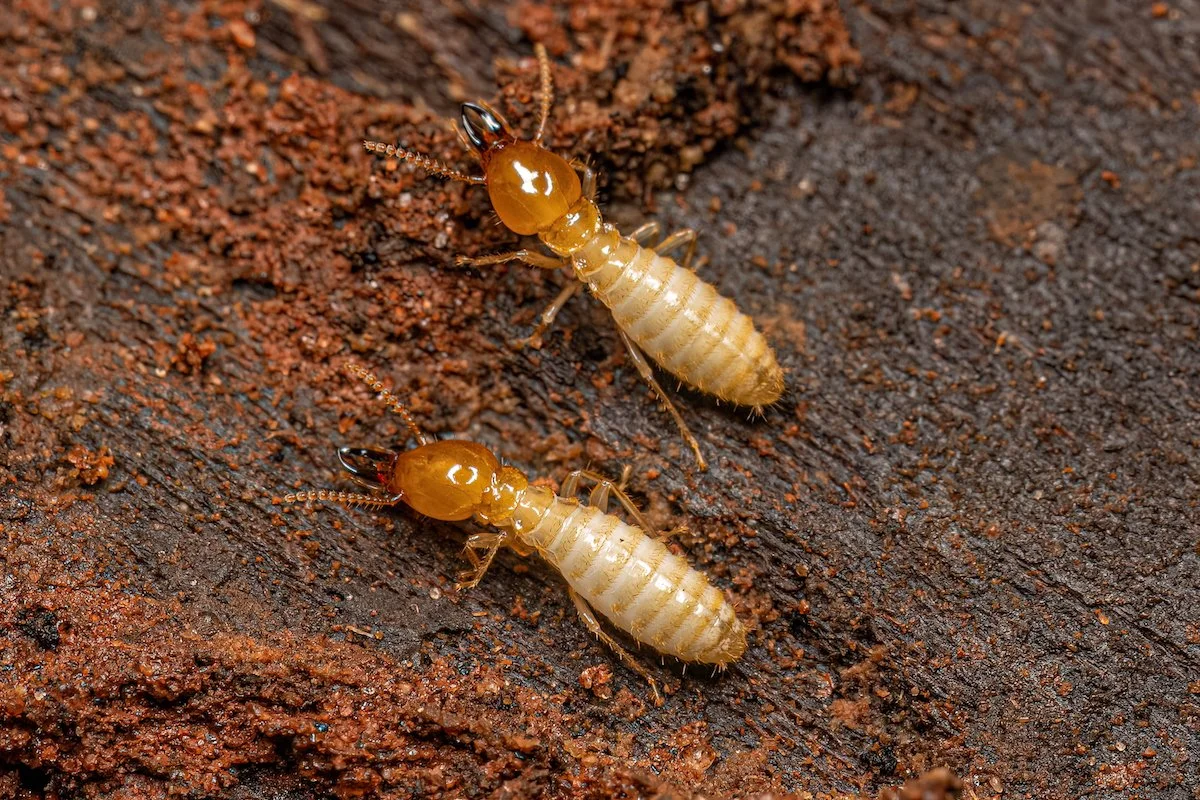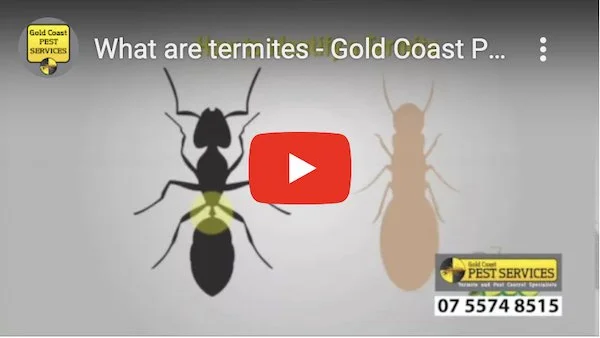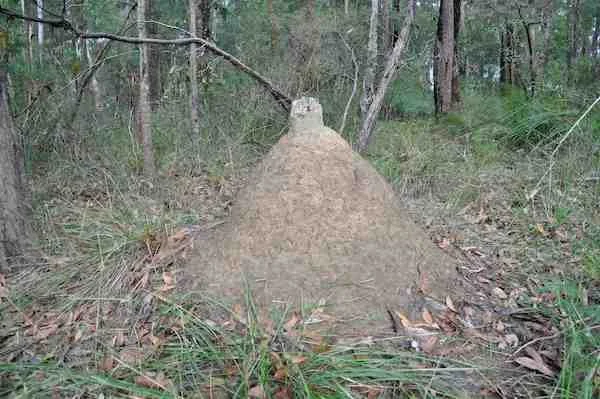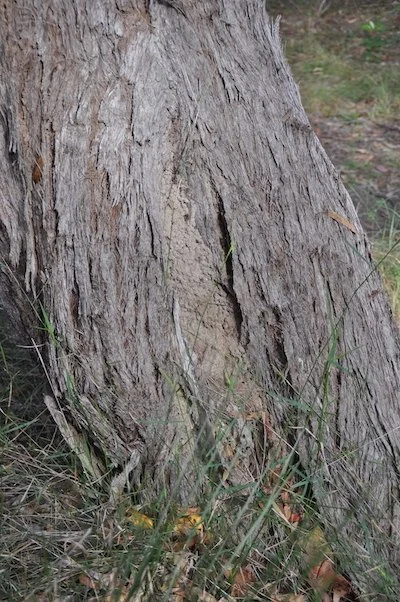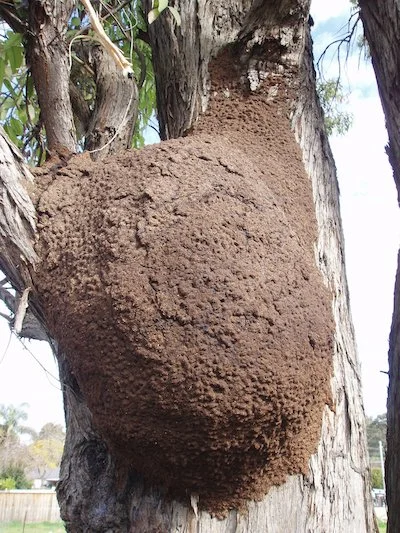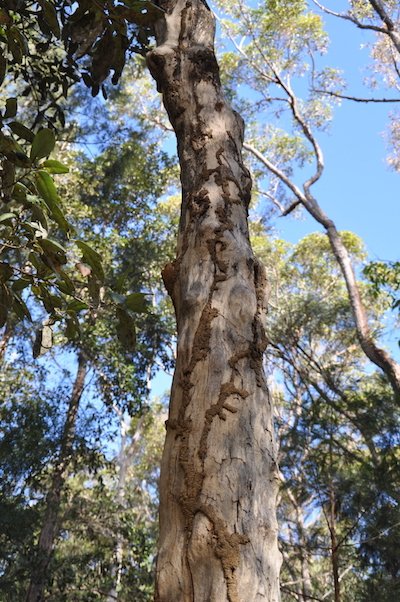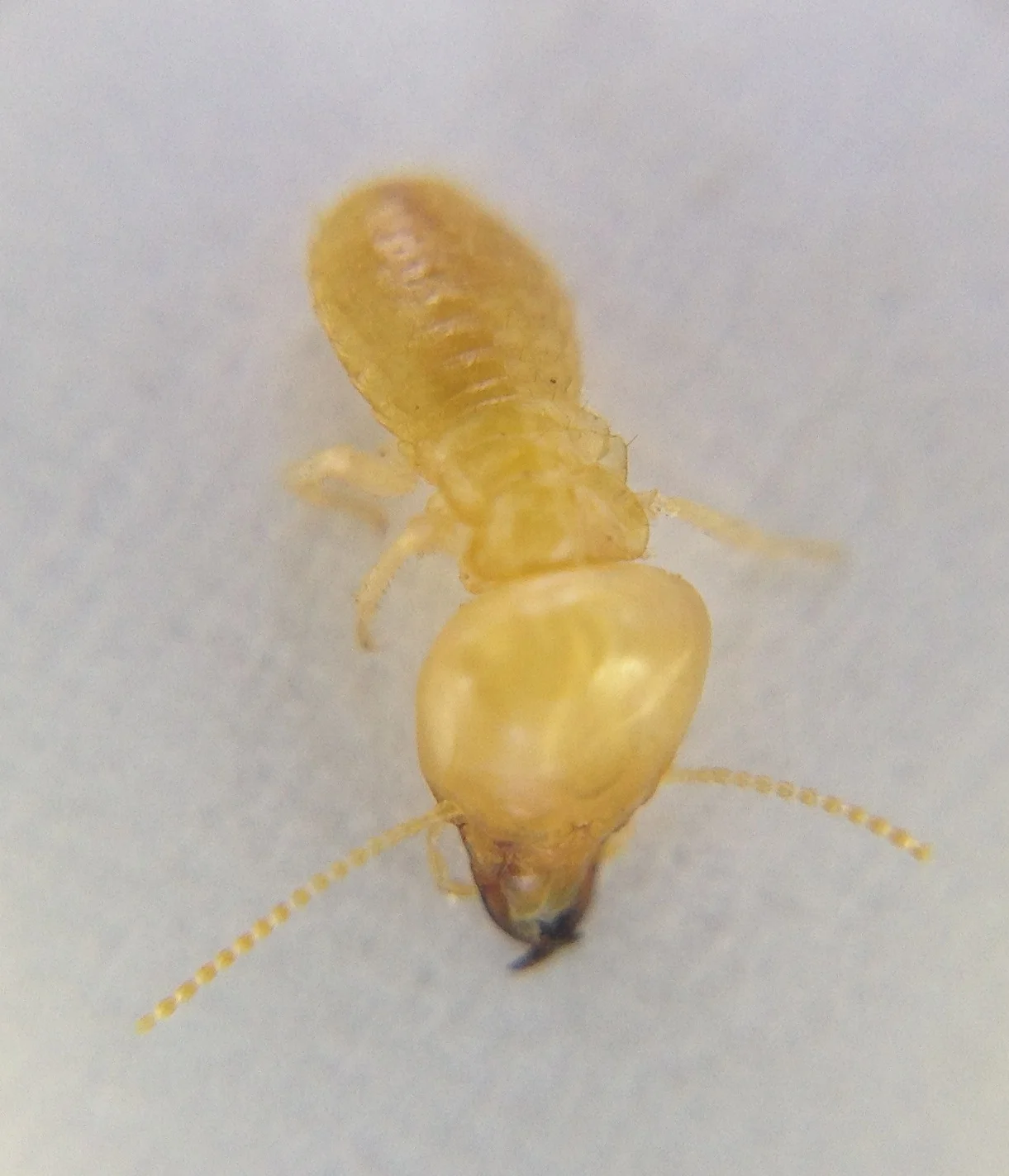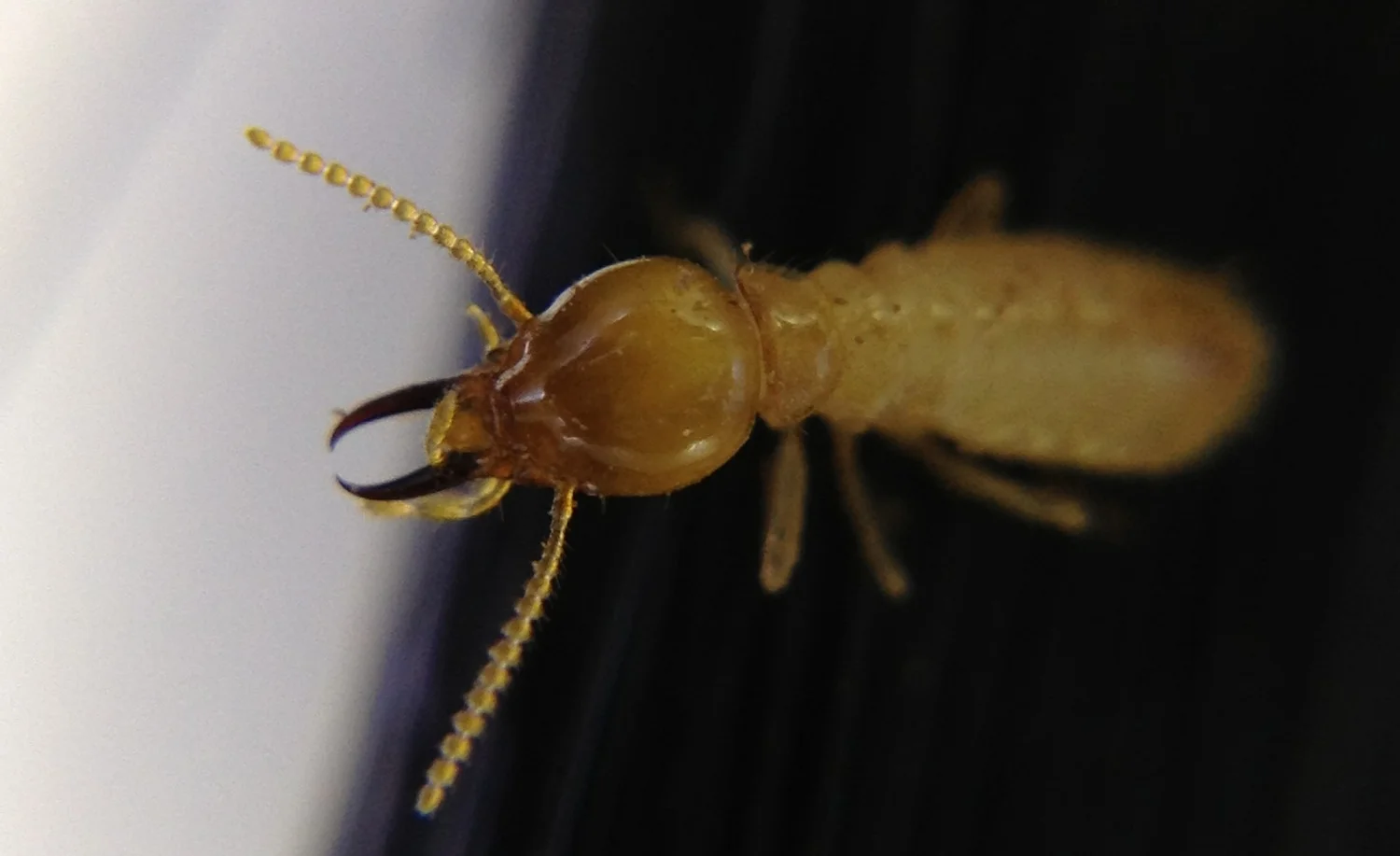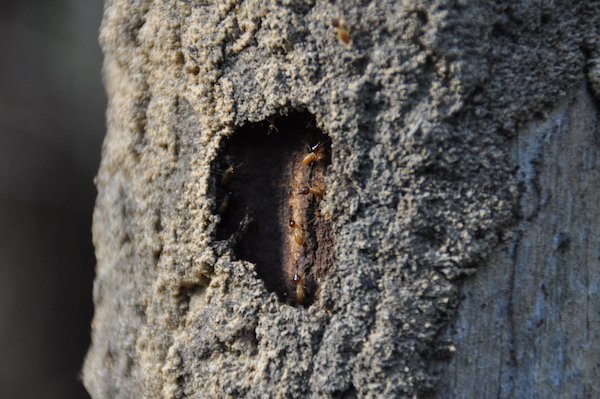Termites on the Gold Coast - All you need to know!
Many of our customers like to know a little more information about termites, after all, it's important to "know your enemy"! Hopefully this information will help you pick up the signs of early termite activity and give you an understanding of the common termites on the Gold Coast and the challenges pest professionals face in controlling these species.
What are termites?
Termites are "social insects" living in colonies that can contain up to a million individuals (depending on the species). There are different "castes" within the colony looking after the different roles of the colony. The queen lays the eggs, workers care for the larvae and carry out the foraging, specialised soldiers protect the colony, and flying termites are the new kings and queens who fly off to start new colonies.
-
The termite queen is the most important termite in the colony. After shedding her wings after a mating flight, the queen termite finds a suitable place to start a nest – normally in most soil near a suitable food source. Initially she carries out all the jobs need to start a colony, but as soon as the first eggs have hatched and developed into worker termites, she focus solely on egg laying. In fact, the termite queen turns into an egg-laying machine capable of pumping out up to 2000 eggs per day! To kill a colony that cannot be located (nests can be difficult to find), it is important to stop the queen producing eggs. This is where termite baits can be very effective.
-
Flying termites (alates) are the new kings and queens produced by the colony. In evenings during spring and early summer, normally just before or after rain, when it is humid and the soil will be moist, they take off from the nest in great numbers. They often fly towards lights, which is how they find their way into your home. Their wings fall off very easily and the king and queen pair off to find a new nest. The vast majority of these winged termites die and even the ones that find their way into your home are highly unlikely to start a nest in your home (as they need to nest in soil). HOWEVER, winged termites mean there is a large nest nearby that could be attacking your home and you should consider a professional Gold Coast termite inspection.
Are termites and white ants the same?
Although termites are often called "white ants", they are not ants at all. In fact, termites are more closely related to cockroaches. Although they look very different, cockroaches and termites actually have a very similar body structure and undergo a similar moulting process as they grow. Cockroaches are great recyclers and will eat a lot of decaying plant material; any of the "bush" cockroaches eat wood, much like termites.
What do termites look like?
-
No visible eyes
Straight antennae
Soft exoskeleton
Tend to be pale or white (heads may be a darker colour)
Check out our blog to learn how to identify the signs of termites.
-
Well formed eyes
Bent antennae ("elbows")
Have a hard exoskeleton ("skin")
Tend to be brown or black
Obviously, it is important to know the difference between ants and termites – one may be annoying, the other may cause thousands of dollars worth of damage!
Termite Behaviour
Termite nest mound on ground
Termite nest in Root crown
Arboreal (Tree) termite nest
Termite mud tubes on trees
-
The main species in Australia are subterranean termites, which means they live underground. They need to be in regular contact with the ground for protection from predators and for moisture. They have very thin cuticles ("skin") and easily dry out, which is why they tend to live in moist soil... and also why termite attacks on property are often associated with leaks, dripping taps or poor drainage issues.
Although they normally make tunnels underground, when they reach a potential food source they often need to come above ground. When they do this they build mud tubes to continue foraging, protecting themselves from predators and maintaining moisture levels. Mud tubes on the outside of your home, in the sub-floor or roof void are a clear indicator your home is under termite attack.
-
Termite nests are often very difficult to locate, as most nests are underground or built inside the base of trees or tree stumps, which is why it is difficult for a professional to determine whether the nest has been destroyed after a treatment. It is a key reason why it is necessary to put in a liquid soil treatment or termite monitoring system after active termites have been eliminated from a building.
However, a few species do produce obvious mounds on the ground, such as Nasutitermes exitiosus. A few actually build their nests in trees (Nasutitermes walkeri) or on top of posts or telegraph poles (Microcerotermes turneri). However, even these species need to have direct contact with the ground for moisture and will have foraging trails or mud tubes leading down the tree or post to the ground.
-
Foraging termites from large termite colonies can easily travel 50-100m from their nest to a feeding site... which means the nest attacking your home may not even be on your property!
Although most nests will be in the yard, nests can sometimes be built under or in the walls of the home itself. Coupled with potential construction faults and lack of a termite management system, this gives the termites easy access to your home.
Sometimes termites will build a bivouac at a major food source (such as your home). This is not a nest but a staging post, for relaying food back to the main colony.
-
White ants are soft bodied, which makes them susceptible to desiccation (drying out) – the main reason they like moist environments. They are also a pretty tasty meal for a number of predators. By building mud tubes over the areas they are foraging, it helps prevent them drying out and protects them from predators.
-
Termites eat cellulose and the biggest source of cellullose is wood. However, don't forget that a number of other materials are made of wood, so are equally attractive to termites - paper and cardboard being particularly tasty! However, white ants have very strong jaws and are capable of chewing through other materials to get to wood, such as plastic and even metal (Great Northern termite)! It is not uncommon for a termite infestation to cause electrical problems as they chew through wiring.
Types of Termites on the Gold Coast
Schedorhinotermes large soliders
Coptotermes soldier
Nasutitermes soliders protecting a hole in a mud tube
Giant Northern termite
-
There are many termite species in Australia, but only a handful are responsible for most of the damage to buildings and structures. The termites in Australia that cause the majority of the damage are subterranean termites. Identifying individual species can be a challenge even for the professional and often identification is based on the features of the soldier caste. Here is some information on the key termite species we find on the Gold Coast.
Schedorhinotermes intermedius
Over the last 10-20 years Schedorhinotermes has become the most common termite species on the Gold Coast. Schedorhinotermes is a difficult termite to control as each colony often consists of a number of different sub-colonies spread over a wide area. This means when a pest professional treats an active Schedorhinotermes infestation, it is very unlikely to destroy the whole nest, which means without installing a termite managements system around the property, there is a very real danger that the termites will return.
Coptotermes acinaciformis
Coptotermes acinaciformis was until relatively recently the most common termite on the Gold Coast. However, we still regularly encounter this species and it is considered one of the most destructive termites in Australia. With large colonies consisting of up to a million individuals, this species can cause significant damage in a matter of months. Although Coptotermes tend to have the biggest nests and have the potential to cause the biggest damage, their are actually one of the easier termites to control.
Microcerotermes species
Although Microcerotermes infestations don't necessarily cause the greatest amount of damage, Microcerotermes are amongst the more common termites on the Gold Coast. Fortunately, Microcerotermes tend to build obvious nest mounds on the ground or in the tree, so with a bit of detective work, control is relatively easy.
Nasutitermes exitiosus
Nasutitermes can be relatively easy to control as their nests are often easier to find – either a mound on the ground or in the tree. If the nest can be found, it can be destroyed directly. However, if the nest cannot be found they can be more difficult to control as some termite products, such as termite baits, tend to be less effective on Nasutitermes due to their different behaviour / colony structure.
Heterotermes species
Heterotermes termites are not necessarily the species to cause major damage, as their colonies are much smaller than some of the other key species, but they can be more difficult to control due to their behaviour. They often move from one feeding area to another and are easily disturbed, so it can be difficult to know whether you have controlled them or they have just moved on. With our experience, if we identity the presence of Heterotermes, we modify our control techniques accordingly.
They are also known for reusing the tunnels of other species. It is not uncommon for Heterotermes to appear in a property after Coptotermes have been eliminated - one of the key reasons why the installation of a termite management system (liquid termite treatment to soil or termite monitoring system) is key after a termite infestation has been eliminated.
Mastotermes darwiniensis
Mastotermes darwiniensis or the Great Northern termite is normally only found in the tropics, in the Northern Territory, parts of northern WA and in Townsville. However, in the past couple of years there have also been a couple of infestations in the Gold Coast hinterland! This is a major concern, as the Great Northern termite is the most destructive termite in the world and can destroy a house in only a few months!
It's too early to know whether this particular termite has become established on the Gold Coast or whether these incidents were just spot infestations bought about through the movement of infested wood from the north, but we are always on the look out for this particular species. With its voracious appetite, it certainly increases the importance of regular termite inspections and the need for a termite treatment to protect your home.
-
Drywood termites belong to a different group of termites to the subterranean termites (listed above). As their name suggest, they tend to live in drywood and can often build their nests inside structures causing significant damage. They do not produce the mud tubes typical of subterranean termites so are a lot more difficult to detect.
The West Indian drywood termite is an invasive species and although not common, it is important for pest professionals to be aware it does occasionally appear in South East Queensland and it's important to know what to look for. They can also have a number of sub-colonies making up part of the same nest, making them very hard to eradicate. Treatment for drywood termites involves moving out of the house, placing the whole house under a plastic cover and fumigating the house!

